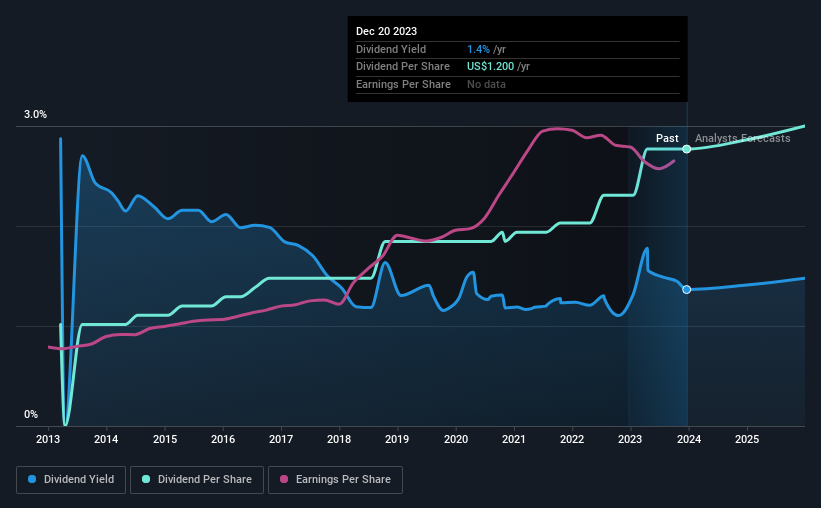There's A Lot To Like About Bank First's (NASDAQ:BFC) Upcoming US$0.30 Dividend
Regular readers will know that we love our dividends at Simply Wall St, which is why it's exciting to see Bank First Corporation (NASDAQ:BFC) is about to trade ex-dividend in the next four days. Typically, the ex-dividend date is one business day before the record date which is the date on which a company determines the shareholders eligible to receive a dividend. The ex-dividend date is of consequence because whenever a stock is bought or sold, the trade takes at least two business day to settle. Thus, you can purchase Bank First's shares before the 26th of December in order to receive the dividend, which the company will pay on the 10th of January.
The company's upcoming dividend is US$0.30 a share, following on from the last 12 months, when the company distributed a total of US$1.20 per share to shareholders. Based on the last year's worth of payments, Bank First has a trailing yield of 1.4% on the current stock price of $87.96. If you buy this business for its dividend, you should have an idea of whether Bank First's dividend is reliable and sustainable. As a result, readers should always check whether Bank First has been able to grow its dividends, or if the dividend might be cut.
Check out our latest analysis for Bank First
Dividends are typically paid out of company income, so if a company pays out more than it earned, its dividend is usually at a higher risk of being cut. Bank First has a low and conservative payout ratio of just 21% of its income after tax.
Companies that pay out less in dividends than they earn in profits generally have more sustainable dividends. The lower the payout ratio, the more wiggle room the business has before it could be forced to cut the dividend.
Click here to see how much of its profit Bank First paid out over the last 12 months.
Have Earnings And Dividends Been Growing?
Stocks in companies that generate sustainable earnings growth often make the best dividend prospects, as it is easier to lift the dividend when earnings are rising. Investors love dividends, so if earnings fall and the dividend is reduced, expect a stock to be sold off heavily at the same time. For this reason, we're glad to see Bank First's earnings per share have risen 16% per annum over the last five years.
Many investors will assess a company's dividend performance by evaluating how much the dividend payments have changed over time. Since the start of our data, 10 years ago, Bank First has lifted its dividend by approximately 11% a year on average. It's exciting to see that both earnings and dividends per share have grown rapidly over the past few years.
To Sum It Up
Should investors buy Bank First for the upcoming dividend? When companies are growing rapidly and retaining a majority of the profits within the business, it's usually a sign that reinvesting earnings creates more value than paying dividends to shareholders. This is one of the most attractive investment combinations under this analysis, as it can create substantial value for investors over the long run. Overall, Bank First looks like a promising dividend stock in this analysis, and we think it would be worth investigating further.
On that note, you'll want to research what risks Bank First is facing. To help with this, we've discovered 1 warning sign for Bank First that you should be aware of before investing in their shares.
If you're in the market for strong dividend payers, we recommend checking our selection of top dividend stocks.
Have feedback on this article? Concerned about the content? Get in touch with us directly. Alternatively, email editorial-team (at) simplywallst.com.
This article by Simply Wall St is general in nature. We provide commentary based on historical data and analyst forecasts only using an unbiased methodology and our articles are not intended to be financial advice. It does not constitute a recommendation to buy or sell any stock, and does not take account of your objectives, or your financial situation. We aim to bring you long-term focused analysis driven by fundamental data. Note that our analysis may not factor in the latest price-sensitive company announcements or qualitative material. Simply Wall St has no position in any stocks mentioned.

